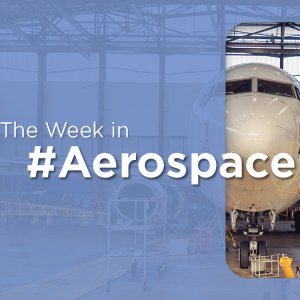Simulation the ‘Way to Go’ For Smaller Companies

STORY INLINE POST
Q: How does the collaboration between Grupo SCC and Ansys work?
A: Our partnership with Ansys goes back 20 years. Grupo SSC has represented Ansys in Mexico and Latin America throughout this time. Through our presence, our reach and the depth of knowledge of our engineers, we are able to bring the best simulation software in the world to our clients. There is a big gap between having the software and knowing how to use it and it is our responsibility to support our clients in growing their competitiveness through Ansys.
Q: What are Ansys' main features and how does these benefit the aerospace industry?
A: The main advantages are reliability and power. The aerospace industry is highly regulated, particularly in terms of safety, so the information provided by the software has to be very good. Ansys offers structural calculation for temperature, speed and acceleration, among other important data. It is a robust software and it has been in the market for 53 years; it is known for being reliable in the information it provides.
Ansys has all the certifications that are often required by industries, especially in the aerospace industry. All the companies that design airplane turbines use Ansys, including GE, Rolls-Royce and Safran, because it meets the industry’s standards for quality and result verification. The same is true for other industries, such as nuclear power. Ansys has been thoroughly tested and it can be used in all types of industries, including aerospace, where it can be exploited for structural, thermal, fluid dynamics, computational fluid dynamics, electromagnetism, electromagnetic interference, sensors, electronics, optimization and more appliances.
Q: How does the software help to improve cost-efficiency in project development?
A: I think the clearest example is the Halcón 2 airship that was on display at FAMEX, which is the first Mexican airplane. The design was 100% made using Ansys and its simulations. Owing to our software, the developers had a high degree of certainty and confidence to say, "OK, let us fly." Especially for companies that do not have labs to physically test things, it is more cost-effective to run simulations. If you want to achieve the same result, simulation shortens the process.
Of course, we have much larger clients that also simulate and also have large labs and centers for physical testing. The combination of the two is the best of both worlds and highly enhances the reliability of a project. But when you do not have physical tests, simulation is the way to go.
Q: How did Grupo SSC participate in the development of El Halcón 2?
A: Giovanni Angelucci, who is an entrepreneur and owner of Horizontec, approached us about five or six years ago, saying he wanted to make an airplane. To be honest, we were a little bit surprised and a little bit skeptical because we always get people with these kinds of dream projects but few people actually make them a reality. Giovanni had that dream but he also had the drive and resilience to endure. We helped him because he needed our simulation software. He came to us specifically looking for Ansys. We put him in a program called Startups that gave him access to the entire Ansys software and our team of experts, who have been advising his engineers to make the Halcón a reality.
Q: What changes has Grupo SSC seen through its journey in Mexico’s industry?
A: Over our 32 years in this sector, we have seen the industry grow. When I started in this industry, we worked hard to market and promote Ansys, since at the time it was an unknown technology. Over time, we started to acquire our first Mexican clients in the oil and gas sector, some CONACYT research centers and universities. We have been working with universities since the beginning because, without engineers, the country would not have anyone to exploit Ansys. Fortunately, we now have more than 200 universities that use Ansys within their academic programs, including UNAM, IPN and Tecnológico de Monterrey, along with other, smaller universities across the country. There is talent everywhere and now we see an environment where there are many international companies that employ young Mexican engineers who are good, eager to learn and five times cheaper than American or German engineers. We see Ford, GM, Continental and a lot of other companies with impressive engineering and design centers that are not just for national product development but for global product development, using Mexican talent. We have been important actors in making all of this happen. It has been a massive transformation and there is a lot of development happening here.
Q: Which trends does Grupo SSC see in Mexico’s industrial sector?
A: Using the automotive sector as an example, we see electrification and autonomous vehicles as the main trends driving the industry. This transformation is also being impacted by the integration of artificial intelligence and quantum computing, which are crucial for running complex simulations that were previously only possible with powerful computers. This presents a significant opportunity for Mexican students and universities to prepare for these changes and to take advantage of the growing demand for simulation experts in these fields.
There is now a greater need for professionals who are skilled in these areas. This includes not only engineers but also lawyers and doctors who can benefit from simulation to better understand and prepare for various scenarios. As the technology behind simulation becomes more accessible, more professions will likely begin to incorporate simulation into their work. This is among the most relevant trends for us.
|
Grupo SSC is a Mexico-based engineering solutions provider. It is a pioneer in the introduction of simulation and design technologies in Mexico using the Ansys software. Grupo SSC serves a wide variety of industries like aerospace, automotive and construction. |








 By Fernando Mares | Journalist & Industry Analyst -
Thu, 12/14/2023 - 16:10
By Fernando Mares | Journalist & Industry Analyst -
Thu, 12/14/2023 - 16:10















